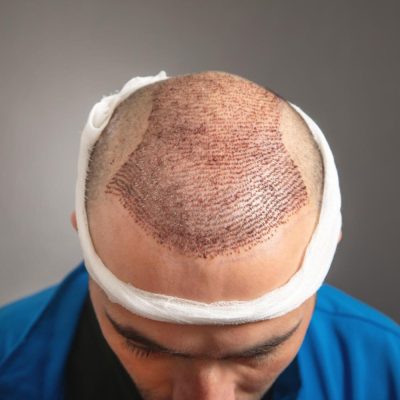Hair Transplant
Hair transplant is a popular and effective surgical procedure for restoring hair growth in areas affected by thinning or baldness, primarily on the scalp. This procedure is commonly sought after by individuals experiencing male pattern baldness, female pattern hair loss, or hair loss due to injury or other medical conditions. Hair transplants offer a permanent solution for hair restoration, using the patient’s own hair to create a natural look.

What is a Hair Transplant?
A hair transplant involves harvesting hair follicles from a donor area (typically the back or sides of the scalp, where hair is more resistant to balding) and transplanting them into areas experiencing thinning or baldness. The transplanted hair follicles continue to grow in their new location, providing a long-term solution to hair loss. Hair transplants are effective in restoring hair density, improving hairline aesthetics, and boosting overall confidence.
Method & Treatment of Hair Transplant
How Hair Transplants Work
Hair transplants work by relocating healthy hair follicles from a donor site to a balding or thinning area. The most commonly used technique of hair transplantation is Follicular Unit Extraction (FUE). A brief about the procedure is given below.
Treatment Procedure
Consultation
The process begins with a detailed consultation to assess the patient’s hair loss, determine the donor site quality, and discuss expectations and potential outcomes.
Follicular Unit Extraction (FUE)
- Individual hair follicles are extracted directly from the donor area using a micro-punch tool.
- These follicles are then implanted into the balding or thinning area through small incisions.
- Depending on the size and number of follicles being transplanted, the procedure may be performed over a single or double sitting.
Post-Treatment Care
Post-procedure care includes instructions on washing, medications to reduce swelling and discomfort, and guidance on activities to avoid. It is important to properly adhere to the instructions to avoid any issues.
Applied Areas of Hair Transplant
Hair transplants can be applied to various areas where hair restoration is desired:
Scalp
The most common area, targeting regions like the hairline, crown, and overall thinning areas.
Eyebrows
For those seeking fuller, more defined eyebrows.
Beard & Mustache
Restores facial hair density for individuals with patchy or sparse growth.
Scars
Can be used to camouflage scars on the scalp or face resulting from injury or surgery.
Precautions and Risks of Hair Transplant
Hair transplants are generally safe, but there are precautions and risks that should be considered:
- Ensure that the surgery is performed by a qualified and experienced surgeon to minimize risks and achieve the best results.
- Disclose your full medical history, including any conditions like blood clotting disorders or medications that could impact healing.
- Properly follow all post-surgical instructions given to you by the dermatologist to achieve best outcomes.
- As with any surgical procedure, there is a risk of infection, which can be minimized with proper post-operative care.
- Temporary hair thinning can occur post-procedure, known as shock loss, but this usually resolves over time.
- If not done correctly, the hair transplant can look unnatural, emphasizing the importance of choosing a skilled surgeon.
Post-Procedure Signs to Look Out For
After a hair transplant, some post-procedure signs are expected as part of the healing process:
Swelling & Redness: Mild swelling and redness around the treated areas are common and typically subside within a few days.
Scabbing & Itching: Small scabs will form around the transplanted follicles, and itching may occur as the scalp heals.
Shedding of Transplanted Hair: It is normal for the transplanted hair to shed within a few weeks post-procedure. This is part of the follicle’s natural cycle, and new hair growth will follow.
Complementary Cosmetic Procedures for Better Outcomes
Hair transplants can be complemented with other cosmetic procedures to enhance overall results and achieve a more comprehensive aesthetic improvement:
Platelet-Rich Plasma (PRP) Therapy
PRP involves injecting concentrated platelets from the patient’s own blood into the scalp to stimulate hair growth and improve follicle health. It is often used in conjunction with hair transplants to promote faster healing and enhance the survival rate of transplanted follicles.
Laser Therapy
Low-level laser therapy (LLLT) can stimulate hair growth and improve the results of hair transplants by increasing blood flow and encouraging hair follicles to enter the growth phase.
